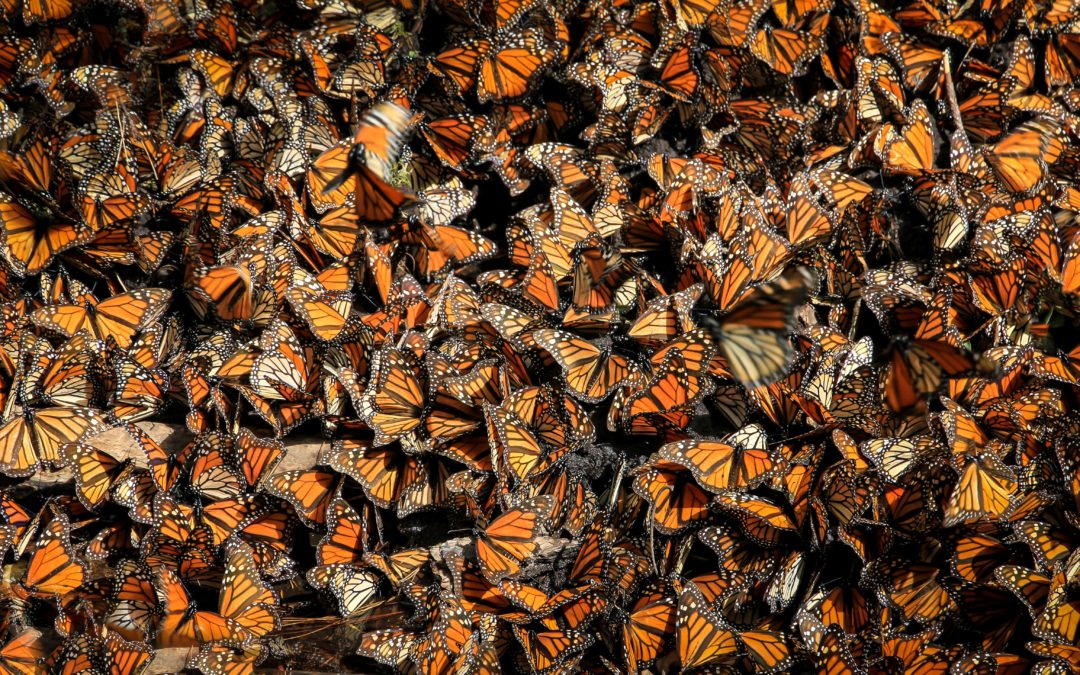Photo credit: Alex Guillaume via Unsplash
Spring Is Here!
As we approach the end of March, we can see signs of Spring popping up across North America. As Spring approaches, we can see trees and flowers starting to bud, birds beginning to sing, and bumblebees and butterflies returning to the landscape.
One telltale and beautiful sign of Spring in North America is the appearance of Monarch butterflies, who travel north from Mexico during mid-to-late March. For many, the colorful migration of monarch butterflies can signify the start of spring and the transformation of seasons.
Monarch Butterfly Migration
The eastern population of North America’s monarchs spends their winters in Mexico, specifically in the State of Michoacan and the Sierra Madre Mountains. Monarchs that populate the western regions of North America spend their winters in California.
Using environmental clues, monarchs know when to migrate south to seek warm temperatures and when to migrate north during the spring and summer. Monarchs begin to leave their Mexican wintering sites in mid-March and have usually all departed by late March.
Many monarchs have already mated, but mating continues throughout the journey north in March and April. The Monarchs that populate Mexico during the winter fly north to repopulate the southern half of the United States. Then their offspring will complete the journey north up to Canada. The general patterns of Monarch spring migration and recolonization across North America occur over two generations.
Cultural Significance of Monarch Butterflies
Monarchs have an irreplaceable role across North America as cultural icons representing important aspects of spirituality and culture. In Mexico, monarchs have been culturally relevant since before the Spanish colonization. They can be seen in stone carvings and paintings of Indigenous peoples. To this day, many cultural celebrations in Mexico involve the monarch.
Their bright colors and flowing movements are represented through festivals and dances. In late October and early November, the monarchs begin their migration south to Mexico around the same time as Dia de Los Muertos (Day of the Dead), a meaningful cultural celebration of loved ones in Mexico.
Among many communities in Mexico and the United States, the monarch butterfly migration across the two countries is symbolic.
Why Conservation Matters
As our climate changes, protecting ecosystems and monarch butterflies go hand in hand. Monarch butterflies and their migration routes are threatened by temperature changes, drought, and other impacts of climate change, habitat destruction, and land-use changes.
Monarchs are extremely valuable culturally, as many people are fond of the beautiful creature and recognize it for its stunning beauty and bright colors. Monarchs are also extremely valuable to the ecosystem because they are pollinators. As the butterflies migrate across the continent, they pollinate ecosystems and allow them to thrive.
At OneNature, we believe in the importance of preserving culturally significant organisms such as Monarch butterflies. To preserve these cultural icons, we must conserve and protect the environment and ecosystems within which these butterflies exist.
Sources:
- Spring recolonization of eastern North America by the monarch butterfly: successive brood or single sweep migration?
- MonarchNet: The North American network of monarch butterfly monitoring programs
- Monarch Butterflies Bring Together Conservation and Culture Between U.S. and Mexico
- Pollinators – Monarch butterfly
